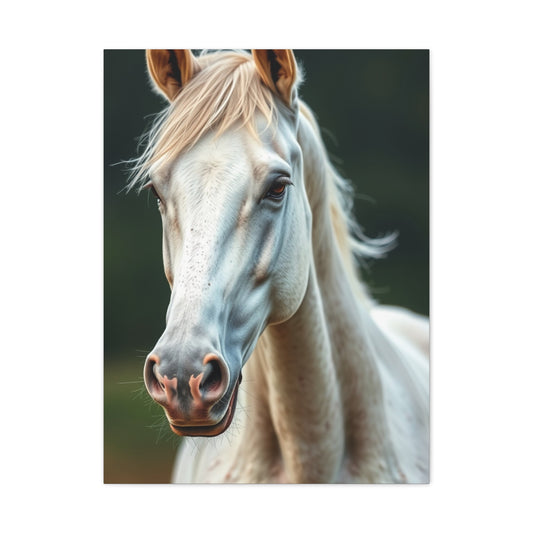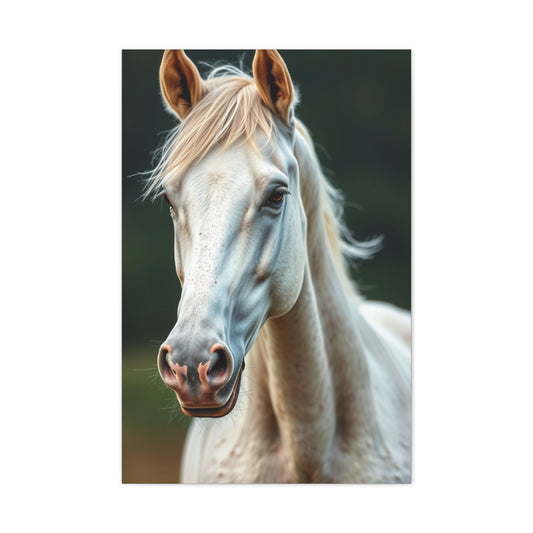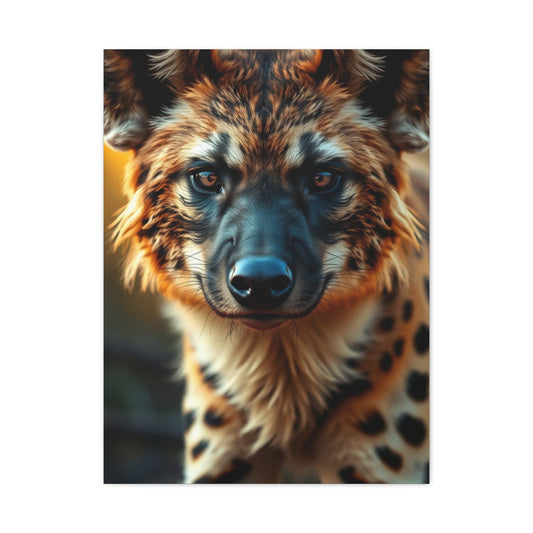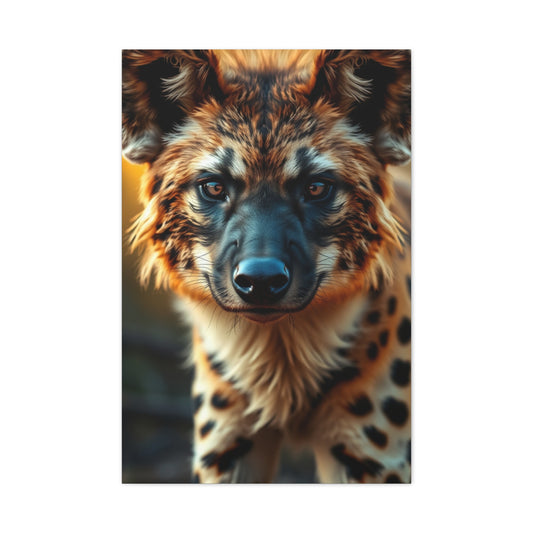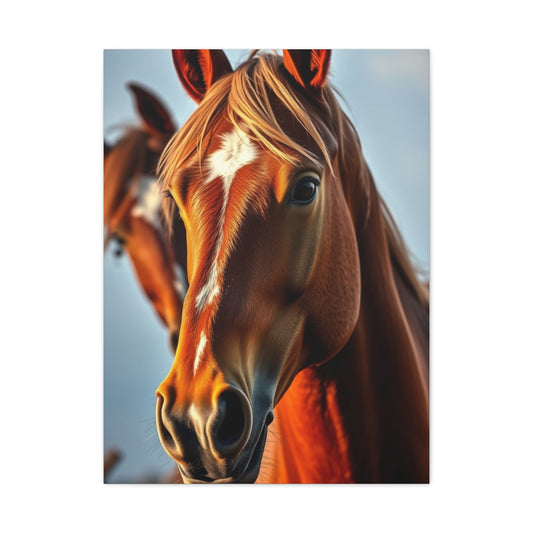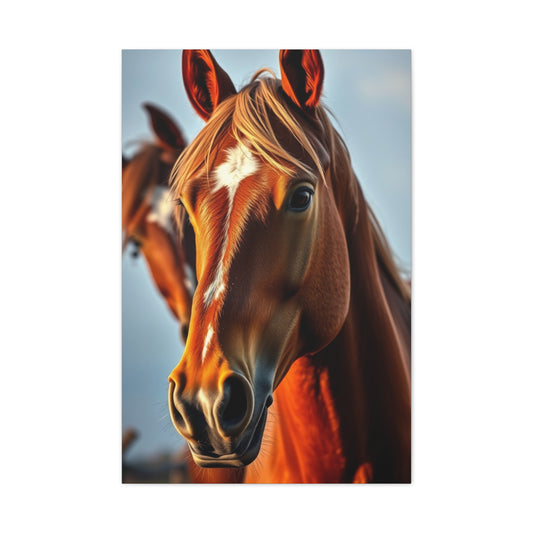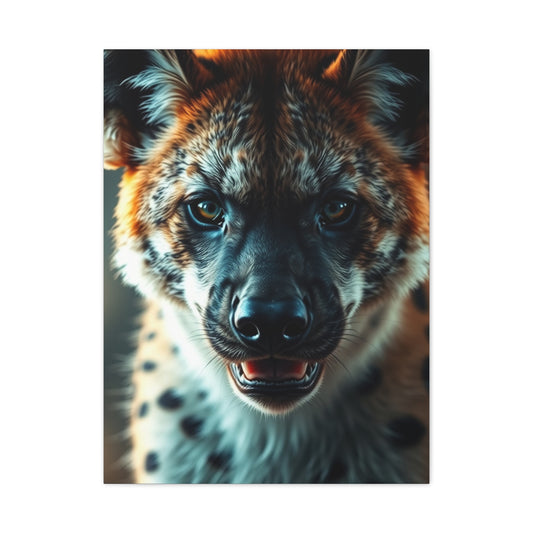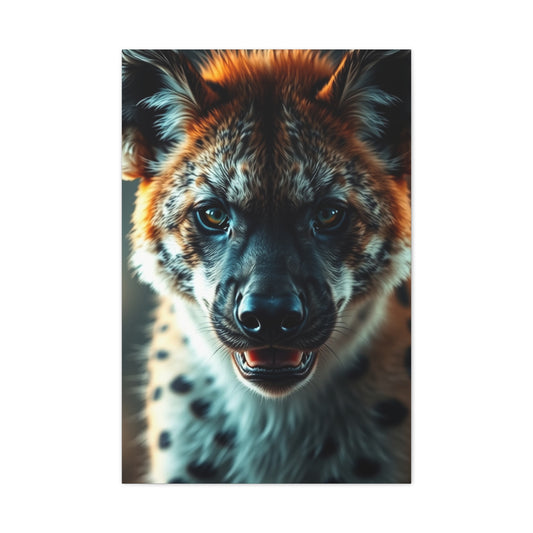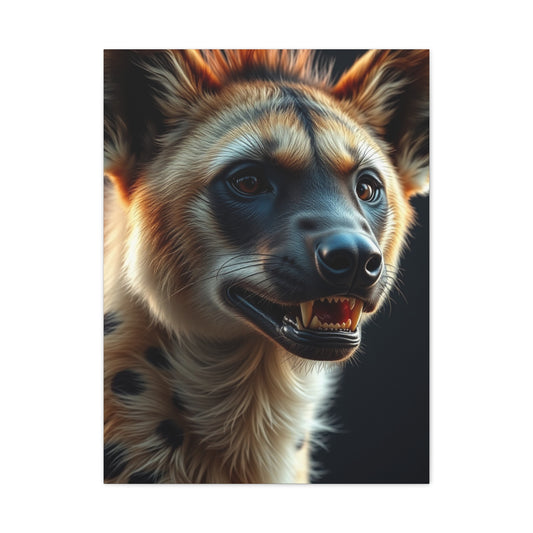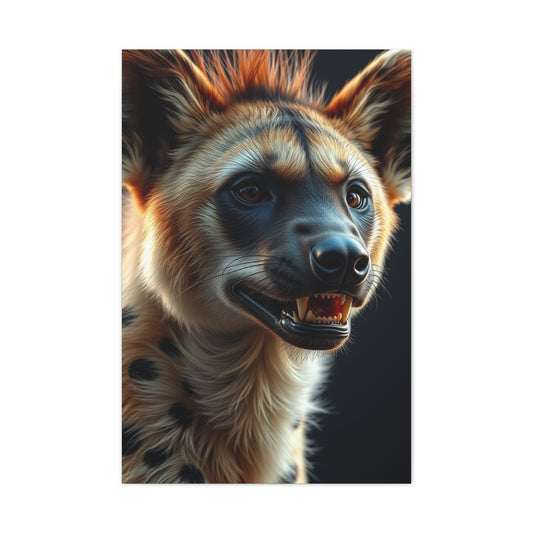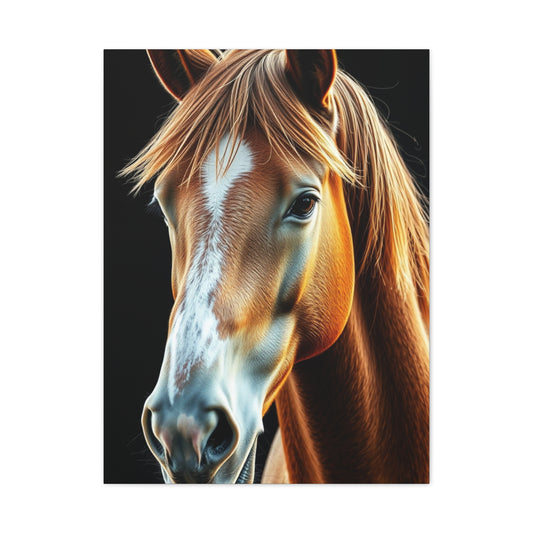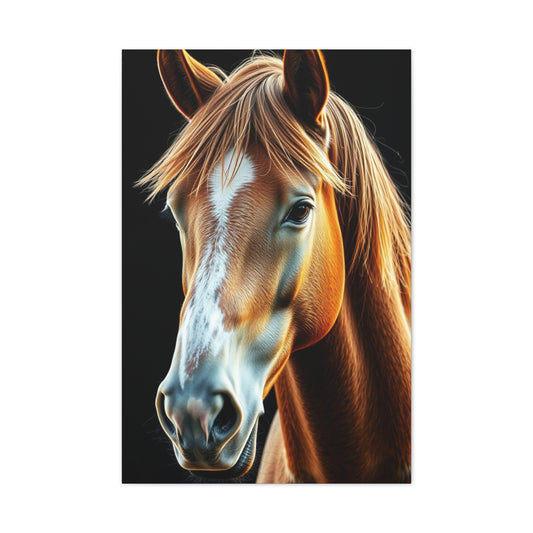The grid method has long been recognized as one of the most reliable techniques for improving drawing accuracy and compositional balance. By dividing a reference image and drawing surface into proportional sections, artists can translate complex visuals into manageable segments. This structured approach minimizes distortion, enhances spatial awareness, and builds confidence, particularly for those refining realism or scale.
Understanding visual proportion is essential when training the eye to see relationships rather than isolated shapes. Practicing with varied imagery strengthens adaptability, whether the subject is architectural, organic, or abstract. Many artists explore high-quality reference imagery such as curated print collections found through resources like fine art print collections, which provide consistent resolution and strong compositional clarity without overwhelming visual noise.
As artists repeat grid-based exercises, muscle memory begins to align with observational accuracy. Over time, reliance on visible grid lines fades, yet the internalized sense of proportion remains. This makes the grid method not merely a copying tool, but a developmental system that enhances freehand drawing and painting skills across multiple styles and mediums.
Developing Observation Skills Through Natural References
Nature-based subjects are particularly effective for grid method practice because they contain irregular forms, layered textures, and subtle tonal shifts. Trees, foliage, and landscapes challenge the artist to capture depth and rhythm while maintaining proportion. Breaking such scenes into grids encourages disciplined observation rather than assumption-based drawing.Working with detailed references such as a scenic tree landscape print allows artists to study branching patterns, negative space, and value distribution in a controlled way. Each grid square becomes a micro-study of light, shadow, and organic movement, reinforcing patience and precision.
Repeated engagement with natural imagery also improves visual memory. Artists begin to recognize recurring patterns in bark textures, leaf clusters, and atmospheric perspective. When the grid is eventually removed, these learned patterns inform more intuitive and expressive work while maintaining structural integrity.
Understanding Medium Costs And Material Choices
Material selection plays a significant role in how artists apply the grid method, particularly in painting. Oil paints, for example, offer extended blending time and depth of color, but they come with higher costs that influence practice frequency and experimentation. Knowing when and how to invest in materials helps artists plan their skill development strategically.Insights from discussions such as oil paint cost factors help artists understand why certain mediums demand more deliberate use. When grids are applied lightly and efficiently, they reduce wasted effort and materials, making premium paints more accessible for structured studies.
The grid method also supports economical learning. Artists can focus on refining composition and proportion before committing expensive pigments to the surface. This disciplined workflow aligns technical growth with financial sustainability, especially for emerging artists balancing learning with limited resources.
Translating Digital References Into Physical Artwork
Modern artists frequently work from digital references, making the grid method an ideal bridge between screen-based imagery and physical creation. By overlaying grids digitally and replicating them on paper or board, artists ensure consistency in scale and alignment. This process reduces frustration when translating high-resolution images into tangible form.Resources that explore digital memory preservation ideas highlight how digital visuals can be thoughtfully transformed into lasting physical pieces. Applying the grid method during this transition maintains fidelity to the original image while allowing for artistic interpretation.
This approach is particularly useful for artists who work with personal photographs or commissioned imagery. The grid becomes a neutral framework that supports emotional storytelling without sacrificing technical accuracy, ensuring the final artwork resonates both visually and sentimentally.
Mastering Architectural And Urban Subjects
Architectural scenes demand precision, making them ideal candidates for grid-based practice. Straight lines, perspective convergence, and repeating structural elements benefit greatly from measured segmentation. The grid method helps artists avoid skewed proportions and inconsistent angles, common pitfalls in urban drawing.Using references like a historic Venice city scene allows artists to practice translating complex cityscapes into organized visual systems. Each grid section can focus on windows, bridges, or reflections, simplifying an otherwise overwhelming composition.
Over time, artists internalize perspective rules through repetition. The grid becomes less visible but more influential, guiding freehand architectural sketches with confidence and accuracy. This skill is transferable across illustration, painting, and design disciplines.
Learning From Ancient Visual Traditions
The grid method is not a modern invention; variations of it have been used for centuries. Ancient artists relied on proportional systems to achieve harmony and balance in their work. Studying these historical approaches provides valuable context and reinforces the grid’s legitimacy as a foundational technique.Exploring collections centered on ancient artistic origins reveals how early creators structured human figures, symbols, and narratives. Applying similar proportional thinking through modern grids connects contemporary practice with historical wisdom.
This historical awareness deepens artistic intent. Artists begin to see the grid not as a restrictive tool, but as a universal language of visual order. Such perspective enriches both technical execution and conceptual depth.
Capturing Rural And Cultural Narratives
Rural scenes and village life present storytelling opportunities rich in cultural detail. These subjects often include layered elements such as buildings, pathways, and human activity. The grid method helps artists organize these components into cohesive narratives without losing authenticity.Working from references like a traditional village scene print allows artists to isolate storytelling elements within each grid section. This approach ensures that no single detail dominates or disappears unintentionally.
Through repeated practice, artists develop sensitivity to rhythm and flow within a composition. The grid supports narrative clarity, guiding the viewer’s eye naturally through the artwork while preserving cultural nuance.
Drawing Inspiration From Iconic Masterpieces
Studying iconic paintings is a proven way to accelerate artistic growth. Many masterpieces demonstrate flawless proportion and balance, qualities that align closely with grid-based learning. Deconstructing such works through grids reveals the underlying structure that supports their emotional impact.Resources discussing iconic painting inspirations provide insight into why certain compositions endure. Applying the grid method to analyze these works helps artists understand spatial relationships beyond surface aesthetics.
This analytical practice sharpens critical thinking. Artists learn to identify compositional strategies they can adapt, rather than imitate, strengthening originality while respecting artistic heritage.
Expanding Creative Confidence With Human Subjects
Human-focused imagery introduces complexity through anatomy, posture, and expression. The grid method offers a stabilizing framework for capturing these subtleties accurately. By dividing the figure into proportional segments, artists reduce the intimidation often associated with portrait or figure work.Creative photography concepts, such as those explored in male portrait photography ideas, provide dynamic references for grid practice. Translating expressive poses through grids builds confidence in handling form and movement.
As artists progress, they rely less on strict measurement and more on intuitive alignment. The grid method thus becomes a stepping stone toward expressive, anatomically sound figure drawing.
Practicing Motion And Energy In Visual Composition
Dynamic subjects such as vehicles or sports scenes test an artist’s ability to convey movement while maintaining proportion. The grid method helps balance speed and structure, ensuring that energy does not compromise accuracy.References like a high speed motorcycle print allow artists to study motion blur, diagonal composition, and focal emphasis within a controlled grid system. Each section contributes to the sense of velocity without visual chaos.
This practice sharpens compositional instincts. Artists learn how to guide motion across the surface, using proportion as an anchor for expressive elements.
Exploring Organic Abstraction And Floral Forms
Abstract and botanical subjects offer freedom of interpretation while still benefiting from structural guidance. The grid method can be applied loosely, serving as a compositional map rather than a strict measurement tool. This balance encourages creativity without losing coherence.Collections featuring abstract floral botanical designs provide layered shapes and color relationships ideal for experimental grid use. Artists can explore repetition, symmetry, and variation within each grid zone.
Through this approach, artists discover that the grid method is adaptable, not rigid. It supports both realism and abstraction, making it a versatile foundation for long-term artistic growth.
Strengthening Muscle Memory And Visual Accuracy
Consistent use of the grid method gradually trains the hand and eye to work in harmony. By repeatedly mapping reference imagery into proportional sections, artists reinforce neural pathways associated with spatial judgment and line control. Over time, this repetition reduces hesitation and improves stroke confidence, even when the grid is no longer physically present on the surface.
This process is particularly valuable for artists aiming to improve realism. As muscle memory develops, the artist begins to anticipate correct proportions instinctively. The grid method becomes an internal guide rather than an external constraint, supporting faster sketching and more decisive mark-making across a wide range of subjects.
Transitioning From Structured Practice To Creative Freedom
One of the most overlooked benefits of the grid method is its role in enabling creative freedom. While it may initially appear rigid, structured practice lays the groundwork for expressive exploration. Once proportional accuracy is internalized, artists can intentionally distort, exaggerate, or abstract forms with confidence and purpose.
This transition marks a critical stage in artistic growth. The artist no longer relies on the grid for correctness but uses it as a conceptual reference when needed. The result is artwork that feels both intentional and expressive, combining technical discipline with personal style in a way that sustains long-term creative development.
Applying The Grid Method To Contemporary Visual Trends
The grid method remains highly relevant when artists engage with contemporary visual trends that emphasize balance, color harmony, and spatial rhythm. Modern aesthetics often rely on intentional placement of shapes and tonal contrast, both of which benefit from proportional planning. By segmenting reference imagery into equal units, artists can study how trend-driven visuals achieve cohesion without overcrowding the frame.
Seasonal visual movements frequently showcase evolving palettes and compositional preferences. Studying curated insights such as summer color trend ideas allows artists to analyze how color distribution works within structured layouts. Applying a grid to these references reveals how balance is preserved even when bold hues dominate the surface.
Repeated analysis of trend-based visuals through grids trains artists to anticipate visual flow. This awareness strengthens adaptability, enabling creators to respond to changing styles while maintaining technical control and compositional integrity.
Using Photographic References To Improve Grid Accuracy
Photography offers precision, clarity, and real-world complexity, making it an ideal companion to grid-based practice. High-quality photographic references allow artists to examine perspective, lighting, and proportion with minimal distortion. When combined with the grid method, photographs become powerful educational tools rather than passive inspiration.
Camera technology continues to shape how visual references are captured and interpreted. Resources discussing Canon cameras for beginners provide insight into how image quality, lens choice, and framing influence reference material. Artists who understand these variables can select or create images that align more effectively with grid exercises.
This technical awareness enhances observational drawing. Artists learn to compensate for lens compression or wide-angle distortion within grid squares, improving accuracy when translating photographic realism into hand-rendered artwork.
Exploring Narrative And Mood Through Structured Imagery
Narrative-driven visuals often rely on deliberate framing and psychological tension. The grid method helps artists decode how such imagery communicates mood through proportion and spatial emphasis. By isolating visual elements within a grid, artists can examine how scale and placement influence emotional impact.Collections centered on stylized narratives, such as cinematic psychological artwork, offer compelling material for structured analysis. Applying grids to these works highlights how negative space, symmetry, and focal points are orchestrated to guide viewer perception.
Through this practice, artists refine storytelling skills. The grid becomes a narrative tool, enabling creators to design compositions that communicate atmosphere and intent with clarity and restraint.
Selecting Reference Equipment For Artistic Growth
Understanding the tools behind image creation empowers artists to make better reference choices. Different camera brands produce varying color profiles, contrast levels, and depth characteristics, all of which affect how an image translates through the grid method.Educational comparisons such as best camera brands guide help artists evaluate which visual qualities suit their practice goals. When selecting references, knowing the source equipment allows for more accurate interpretation of light and form within grid sections.
This knowledge reduces guesswork during rendering. Artists can adjust grid emphasis based on anticipated distortions or enhancements, resulting in more faithful and confident reproductions.
Studying Environmental Complexity With Grid Precision
Dense natural environments challenge artists with overlapping forms, layered textures, and fluctuating depth cues. The grid method provides order within this complexity, allowing each segment to be addressed methodically without losing the overall sense of immersion.Working from references like a tropical forest scenery print enables artists to dissect foliage density and atmospheric perspective. Each grid square becomes an opportunity to study tonal variation and depth relationships.
This segmented focus improves patience and observational stamina. Artists gradually learn to manage visual complexity, translating intricate environments into cohesive compositions without flattening or oversimplifying the scene.
Refining Artistic Style Through Curated Visual Studies
Developing a recognizable artistic style requires intentional study and selective influence. The grid method supports this process by allowing artists to analyze how different creators structure their work beneath the surface aesthetics.Examining distinctive visual voices through references such as expressive modern art styles encourages artists to break down stylistic decisions within grid boundaries. This reveals how proportion, repetition, and alignment contribute to a signature look.
By comparing multiple styles through grids, artists identify patterns that resonate with their personal preferences. This analytical approach accelerates stylistic clarity while maintaining technical discipline.
Expanding Visual Literacy Through Industry Publications
Staying informed about visual culture sharpens an artist’s critical eye. Industry publications often showcase exemplary compositions, emerging trends, and innovative techniques that can be studied through grid analysis.Reading features highlighted in top photography magazines 2025 exposes artists to diverse visual standards. Applying grids to standout images trains artists to recognize compositional excellence across genres.
This habit strengthens visual literacy. Artists become more discerning observers, capable of identifying effective design choices and adapting them thoughtfully within their own work.
Learning Composition From Film And Motion Media
Motion-based imagery introduces timing, framing, and dynamic balance, all of which can inform static composition. By pausing frames and applying grids, artists can study how filmmakers organize visual weight and movement.Insights into recording tools such as 35mm film camera options help artists understand cinematic framing traditions. Translating these frames through grids reveals enduring compositional principles.
This crossover practice enhances versatility. Artists learn to capture implied motion and narrative tension within still compositions, enriching their visual storytelling capabilities.
Integrating Personal Expression With Structured Practice
Personal expression flourishes when supported by strong fundamentals. The grid method offers a reliable framework that allows artists to experiment without losing control of proportion and balance.Studying curated collections like contemporary expressive artwork helps artists observe how emotion and structure coexist. Applying grids to such works reveals intentional deviations that enhance expressiveness rather than undermine accuracy.
This balance empowers artists to push boundaries confidently. The grid becomes a silent partner in creativity, supporting exploration while safeguarding compositional strength.
Translating Video References Into Static Mastery
Video references provide a wealth of visual information, from gesture to lighting transitions. Artists can extract still frames and apply grids to study composition at decisive moments.Learning about capture tools through resources such as modern camcorder options enhances awareness of framing and resolution. This understanding improves frame selection for grid-based studies.
By analyzing motion-derived stills, artists sharpen timing and compositional judgment. The grid method anchors these dynamic references, transforming fleeting moments into structured learning opportunities that elevate overall artistic skill.
Preserving Emotional Value Through Structured Artwork Creation
The grid method is especially powerful when artists work on emotionally meaningful subjects. Whether the source material is sentimental, symbolic, or personal, structure helps protect the integrity of the original idea. By dividing the composition into measured sections, artists reduce the risk of distortion that could weaken emotional impact.
When working with deeply personal imagery, clarity and proportion matter as much as expression. Concepts explored in discussions about children artwork keepsake ideas highlight how meaningful visuals deserve careful translation. Applying the grid method ensures that original proportions are respected while still allowing room for artistic refinement.
This balance between emotion and discipline builds trust in the process. Artists gain confidence knowing that their work honors the source material, which is particularly important when creating pieces tied to memory, family, or personal milestones.
Designing Symbolic And Seasonal Visual Narratives
Symbolic themes often rely on subtle visual cues rather than overt detail. Seasonal or emotionally themed compositions benefit from strong compositional planning so that symbolism remains clear without overwhelming the viewer. The grid method provides a reliable framework for arranging focal points and supporting elements.Exploring references centered on emotional symbolism, such as romantic seasonal art themes, helps artists study how balance and spacing reinforce sentiment. When these references are broken into grid sections, underlying compositional logic becomes easier to understand and replicate.
Through repeated practice, artists learn to communicate mood intentionally. The grid does not remove emotion; instead, it sharpens it by ensuring that every element contributes purposefully to the overall narrative.
Translating Digital Creativity Into Physical Precision
Digital artwork presents unique challenges when converted into physical form. Differences in scale, resolution, and surface texture can alter the original vision if not carefully managed. The grid method acts as a bridge, maintaining consistency between screen-based design and tangible execution.Guidance found in resources discussing digital artwork print conversion reinforces the importance of planning during this transition. Applying a grid to both the digital file and physical surface preserves alignment and proportion.
This approach is particularly valuable for artists who work across mediums. The grid method allows digital creators to expand confidently into traditional formats while maintaining visual accuracy and professional polish.
Refining Scale Awareness Across Different Art Sizes
As artists progress, one of the most critical skills to master is scale awareness. The grid method trains the mind to understand how proportions shift when an image is enlarged or reduced. By consistently practicing with different grid densities, artists learn how small inaccuracies multiply at larger sizes, reinforcing the importance of precise observation from the start.
This awareness translates into stronger planning habits. Artists become more deliberate about spacing, margins, and focal placement, regardless of the final size of the artwork. Over time, scale ceases to be an obstacle and instead becomes a creative variable that artists can control with confidence.
Improving Focus And Reducing Visual Overwhelm
Complex compositions can easily overwhelm artists, leading to rushed decisions or abandoned work. The grid method counters this by breaking visual information into digestible segments. Instead of confronting the entire image at once, the artist focuses on one section at a time, reducing cognitive fatigue.
This segmented workflow improves concentration and endurance. Artists remain engaged for longer periods and develop a calmer, more methodical approach to problem-solving. The result is cleaner execution, fewer proportional errors, and a more satisfying creative process overall.
Studying Still Life Composition With Structural Clarity
Still life subjects offer controlled environments ideal for mastering proportion and spatial relationships. Objects such as vessels, flowers, or everyday items challenge artists to observe subtle curves, shadows, and relative scale. The grid method simplifies these observations into manageable segments.Using refined references like a minimalist decorative vase print allows artists to focus on contour accuracy and tonal balance. Each grid square isolates form transitions, making it easier to capture symmetry and depth.
Through still life practice, artists strengthen foundational skills. The grid method encourages patience and precision, qualities that translate directly into improved confidence when tackling more complex compositions.
Creating Multi Image Harmony Through Grid Planning
Compositions built from multiple images require exceptional organizational skill. Without structure, visual cohesion can quickly break down. The grid method provides a unifying system that aligns separate elements into a single, balanced composition.Insights from discussions on multi image display layouts demonstrate how thoughtful spacing and alignment elevate visual impact. Applying grid planning ensures consistent margins, rhythm, and proportional relationships across all components.
This practice trains artists to think holistically. Rather than focusing on individual images alone, they learn to design visual systems that function cohesively, an essential skill for advanced composition work.
Interpreting Landscapes With Depth And Scale Accuracy
Large-scale landscapes present challenges in depth perception, atmospheric perspective, and spatial layering. The grid method helps artists manage these complexities by breaking expansive scenes into readable sections.
Working from references such as a national park landscape scene allows artists to study how foreground, middle ground, and background interact. Grid segmentation clarifies scale relationships and helps maintain consistent perspective throughout the composition.
As artists refine this skill, landscapes gain realism and immersion. The grid method supports believable depth while allowing artists to emphasize mood and atmosphere intentionally.
Advancing Anatomical Understanding Through Measured Study
Anatomy is one of the most demanding subjects in visual art due to its reliance on precise proportion and structural accuracy. The grid method offers a systematic approach to studying the human form without becoming overwhelmed by complexity.Examining structured references such as anatomy focused art studies enables artists to analyze skeletal alignment, muscle groups, and body ratios. Applying grids helps isolate these components, reinforcing anatomical logic.
This method builds a strong foundation for expressive figure work. Once proportions are internalized, artists can exaggerate or stylize confidently while retaining anatomical credibility.
Selecting The Right Capture Tools For Reference Quality
High-quality references are critical for effective grid-based practice. Understanding how different capture tools affect image characteristics allows artists to choose references that align with their technical goals.Educational overviews such as the complete camera selection guide help artists understand resolution, lens behavior, and framing options. This knowledge improves reference selection and enhances accuracy during grid translation.
By aligning reference quality with grid precision, artists minimize distortion and maximize learning efficiency. This strategic approach supports long-term technical growth.
Capturing Life Moments With Sensitivity And Structure
Some subjects require exceptional care due to their emotional significance. Moments tied to family, growth, or anticipation benefit from structured handling to preserve authenticity. The grid method provides gentle control without diminishing emotional warmth.Themes explored in content about ultrasound memory book ideas emphasize the importance of thoughtful presentation. Applying grids ensures that delicate details remain proportionally accurate and visually balanced.
This approach reassures artists working with sensitive material. The grid method supports respectful interpretation, allowing emotion and craftsmanship to coexist harmoniously.
Learning From Cultural And Musical Visual Interpretations
Art inspired by music and cultural figures often blends rhythm, movement, and symbolism. Capturing these qualities visually requires strong compositional planning. The grid method helps artists translate abstract concepts like sound and performance into structured imagery.Studying references such as a classical music inspired portrait reveals how posture, gesture, and spacing convey narrative. Grid analysis uncovers the compositional decisions that support expressive storytelling.
Through this practice, artists expand conceptual range. The grid method becomes a tool for interpreting intangible themes, reinforcing clarity while allowing artistic imagination to flourish.
Building Consistency Across Multiple Projects
Consistency is a defining trait of professional-level artwork, and it is often what separates amateur efforts from truly polished, cohesive bodies of work. The grid method plays a crucial role in achieving this consistency by providing a systematic approach to composition and proportion. By segmenting each reference image and corresponding drawing surface into precise, measurable units, artists can ensure that each element is placed accurately relative to the others. This structure minimizes guesswork, reducing errors that might otherwise accumulate across multiple projects and disrupt visual harmony.
Applying the grid method consistently across different pieces allows artists to develop a disciplined workflow. Each new project begins with a familiar framework, enabling them to focus on refinement, detail, and creative exploration rather than worrying about alignment or proportion. This is particularly valuable when producing series-based artworks or fulfilling client commissions, where maintaining visual continuity is essential. By analyzing each grid section, artists can make deliberate choices about placement, spacing, and scale, ensuring that each piece contributes cohesively to the larger collection.
Strengthening Long Term Artistic Discipline
In addition to improving technical precision, the grid method is instrumental in fostering long-term artistic discipline. This technique requires patience, focus, and intentionality, qualities that are critical for sustained growth and mastery. By dividing a composition into manageable sections, artists are trained to approach complex subjects systematically, reducing the temptation to rush through challenging areas. This methodical process develops both mental stamina and practical skills, reinforcing the idea that careful preparation is as important as execution.
The discipline cultivated through grid practice extends far beyond individual pieces. Artists learn to set aside time for deliberate observation, structured planning, and incremental improvement. Each completed grid-based study reinforces the value of slow, consistent effort, encouraging habits that support lifelong learning and continual skill refinement. Over time, artists internalize principles of proportion, spatial relationships, and compositional balance, allowing them to execute more complex works with confidence and reduced reliance on external measuring tools.
Conclusion
The grid method stands as one of the most transformative techniques for artists across all skill levels, offering a structured pathway to elevate both technical precision and creative confidence. Its primary value lies in its ability to simplify complex compositions, transforming overwhelming visual information into manageable, measurable sections. By dividing an image into proportional units, artists gain the ability to accurately translate reference material onto a working surface while preserving the integrity of form, scale, and perspective. This structured approach reduces errors, minimizes distortion, and accelerates skill development, making it particularly valuable for those aspiring to create realistic or highly detailed work.
At its core, the grid method teaches artists to see rather than assume. Many beginners rely on intuition or estimation when attempting to replicate an image, which often leads to misaligned features, skewed proportions, or uneven spacing. By contrast, grid practice encourages deliberate observation, where every line, shape, and angle is measured and contextualized relative to surrounding elements. Over time, these exercises enhance visual literacy, sharpen spatial awareness, and train the eye to detect subtle discrepancies in proportion. This heightened observational capacity is not only applicable to realistic or representational art but also strengthens abstraction and conceptual work, as artists learn to balance structure and creativity within a unified framework.
One of the grid method’s most profound benefits is its versatility. It applies equally well to portraiture, landscapes, still life, architectural studies, abstract exploration, and mixed media compositions. For landscapes, grids allow artists to maintain consistent scale across vast scenes, ensuring that foreground, middle ground, and background elements retain believable depth and proportion. For portraiture or figure studies, the grid becomes a roadmap for capturing anatomy accurately, allowing the artist to focus on expression, gesture, and nuance without sacrificing structural integrity. Even in abstract or experimental compositions, the grid can function as a flexible guide, helping to maintain balance and harmony while permitting expressive deviations.
Another critical aspect of grid practice is its role in developing discipline, patience, and long-term focus. Artistic growth is rarely linear, and many learners struggle with consistency, motivation, or the temptation to rush through challenging tasks. The methodical nature of the grid requires sustained attention and a step-by-step approach, fostering habits that build both technical skill and professional work ethic. Artists learn to approach every project with intentionality, breaking it into achievable segments rather than being overwhelmed by the whole. This mindset translates into improved problem-solving, greater resilience in facing difficult compositions, and a more strategic approach to artistic experimentation. In essence, the grid method nurtures not only the hand and eye but also the creative mindset, reinforcing the principle that mastery is achieved through consistent, deliberate practice.
The benefits of the grid method are further amplified when combined with high-quality references. Whether studying digital imagery, photography, historical masterpieces, or contemporary visual trends, working from reliable sources allows artists to focus on translation rather than deciphering ambiguous details. The practice of overlaying grids on photographic references, for instance, enhances understanding of perspective, lighting, and proportion while building the artist’s capacity to replicate subtle tonal variations and spatial relationships. Similarly, examining iconic artworks or curated collections through grids offers insight into compositional strategies, the use of negative space, and the orchestration of visual rhythm. Over time, this analytical practice enables artists to internalize structural principles, making it possible to create original compositions that maintain balance and coherence without strict reliance on physical grids.
Beyond technical skill, the grid method also supports the preservation of emotional and narrative integrity in art. Whether capturing a meaningful landscape, a family portrait, or a symbolic still life, maintaining accurate proportion ensures that the original intent and visual impact are not lost. Artists working with sentimental or narrative-driven imagery benefit from the grid’s ability to maintain spatial accuracy while allowing expressive adjustments. The method helps them focus on storytelling elements, emotional weight, and compositional flow, fostering work that resonates with viewers while remaining technically sound. In this way, the grid method functions as both a practical and conceptual tool, bridging precision and creativity in a way that enhances artistic voice.
In conclusion, the grid method represents a cornerstone technique for artists seeking to improve skill, discipline, and visual literacy. Its advantages span technical accuracy, observational development, compositional balance, emotional preservation, and professional consistency. By training both the hand and the mind, the method nurtures a disciplined approach to art-making while simultaneously encouraging expressive freedom. Whether applied to realistic studies, abstract explorations, personal projects, or professional commissions, the grid method equips artists with the tools needed to translate complex references into coherent, compelling works. Its long-term value lies not only in improving proportion and perspective but also in cultivating patience, focus, and creative confidence. For any artist committed to growth, the grid method is not simply a technique—it is a foundational practice that unlocks the full potential of both technical skill and imaginative vision, laying the groundwork for a lifetime of artistic achievement.
This conclusion, reflecting on both practical and philosophical dimensions, underscores why the grid method has endured as a trusted approach in artistic pedagogy and continues to empower artists around the world. By integrating this method into regular practice, artists can achieve a level of precision, consistency, and expressive freedom that supports meaningful, high-quality work across any subject, medium, or scale. It is a tool that transforms learning into mastery, structure into creativity, and observation into artistry.








